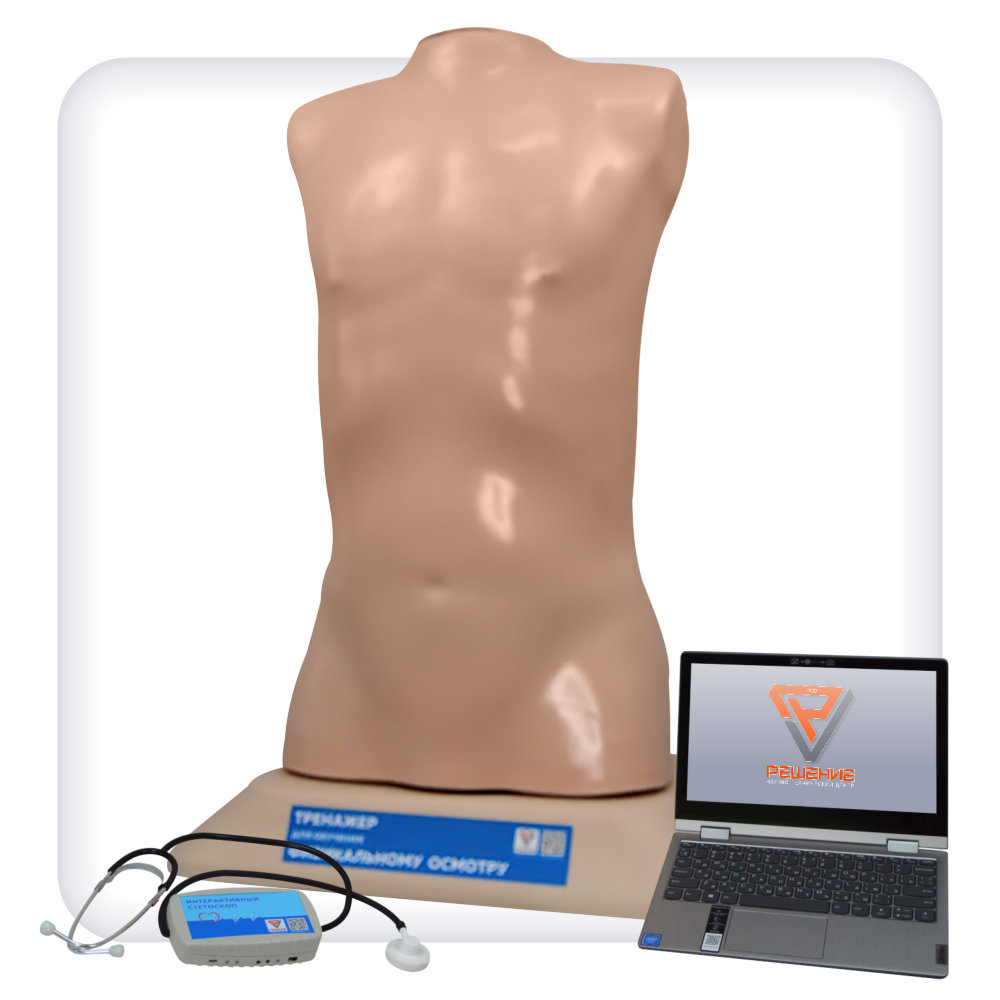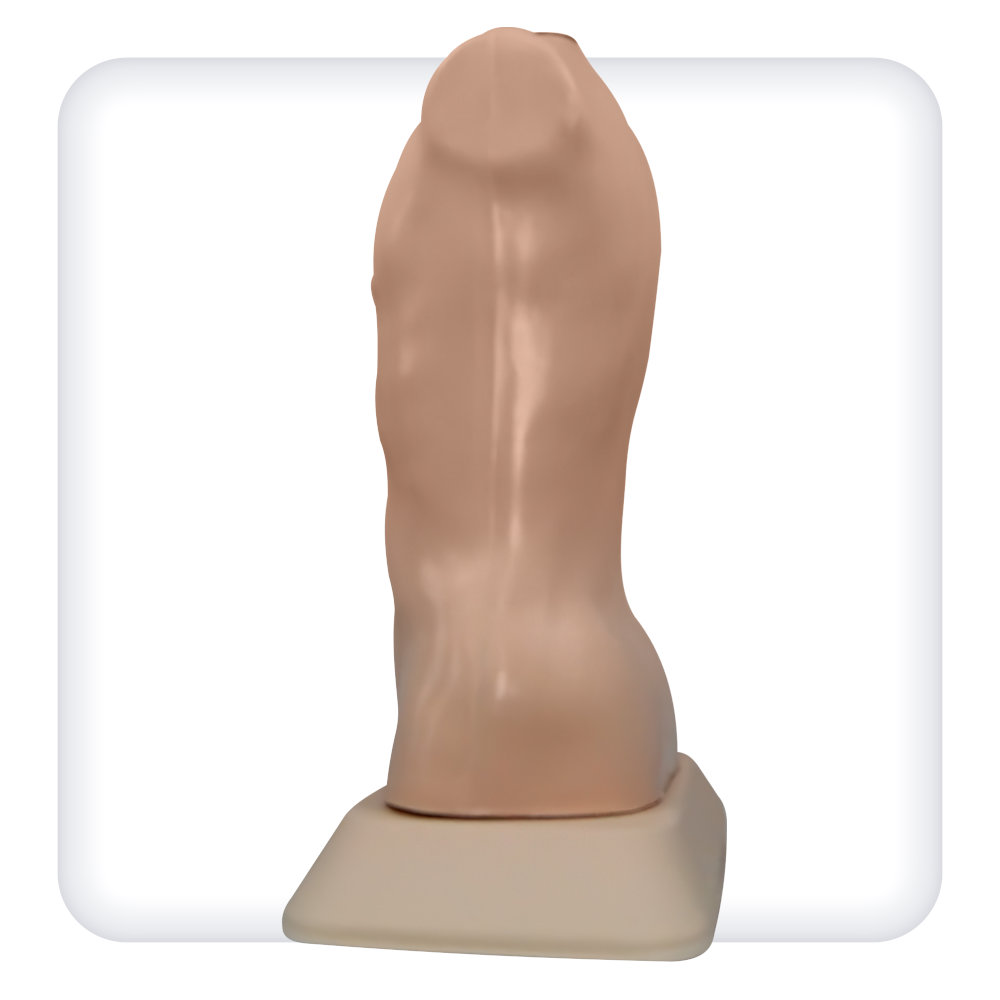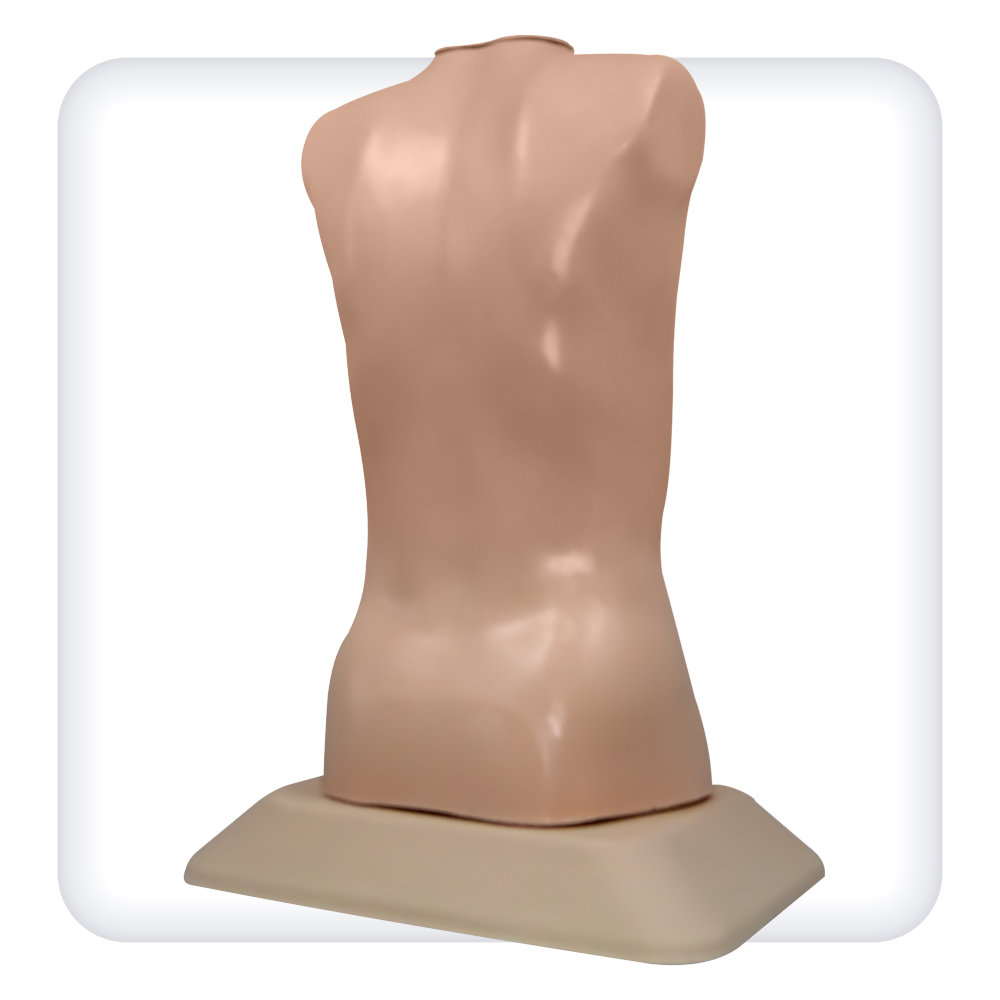This simulator is a model of an anatomically correct human torso, mounted on a special base. It’s designed for practicing the skills of auscultation of the heart and lungs. The auscultation points are located in the places accepted in medical practices, that makes it possible to listen to various variants of pathologies both from the front and from the back.
Highly sensitive sensors integrated into anatomically correct auscultation points allow you to reproduce a particular sound when you touch them correctly with a stethoscope.
Functional features :
- possibility of individual and group classes;
- extensive database of real sound pictures;
- anatomical landmarks in the form of clavicles, ribs, intercostals and large pectoral muscles;
- The material of the simulator manufacture is close to the natural values in its physical properties.
Heart tones:
- aortic stenosis;
- second heart tone split;
- second heart tone amplified;
- holosystolic noise;
- ventricular septal defect;
- atrial septal defect;
- pendulum-like rhythm;
- mitral stenosis;
- mitral valve insufficiency;
- normal heart tones;
- open ductus arteriosus;
- the first heart tone is weakened;
- first heart tone split;
- first heart tone amplified;
- different gallop rhythm options;
- blood regurgitation in aortic valve insufficiency;
- blood regurgitation in case of tricuspid valve insufficiency;
- pulmonary trunk stenosis;
- physiological third heart tone;
- four-part rhythm;
- pericardial friction noise;
- isolated pulmonary artery valve stenosis;
- atrial fibrillation;
- aortic insufficiency.
Breathing sounds:
- wet wheezing;
- dry wheezing;
- rough wet wheezing;
- rough breathing noises;
- Crepitation;
- small bubbly wet wheezes;
- normal bronchial respiration;
- normal vesicular respiration;
- reduced respiratory noise;
- abnormal bronchial respiration;
- shortness of breath;
- whistling wheezes;
- dry wheezing (low tone);
- pleural friction noise.
The simulator is equipped with a tablet computer with installed software that allows you to conduct classes in two modes-training and control.
In the training mode the student independently chooses a particular picture and listens to it in the correct places of auscultation. When it is selecting the control mode, the program randomly selects the sound and the student must give a conclusion and select a particular pathology from the list.
For group listening to the studied pathologies, it is possible to connect an acoustic system with the ability to output sound to the audience.
The simulator is intended for use by students and residents of universities and medical colleges in the course of accreditation.
Equipment:
- The simulator
- Phonendoscope
- Wireless headphones
- Tablet computer
Documentation:
- Passport of product
- User Manual
Material:
Silicone, two-component cold-cured plastic, ABS polyvinyl chloride, MDF
Dimensions, mm:
760 x 520 x 330
Weight, kg:
20




